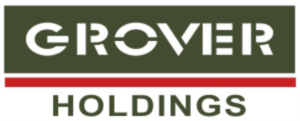
In facilities producing biologics and mammalian cell culture APIs, pH buffers such as phosphate, acetate, and citrate are ever-present, used in preparing culture media and product formulations.
However, even microscopic traces of these pH buffers left on contact surfaces like stainless steel trolleys, work tables, or transport trays can cause staining and eventually lead to corrosion.
The Invisible Threat: Buffer Residue and Stainless-Steel Corrosion
Over time, the accumulation of pH buffer residues creates localised pH imbalances that accelerate corrosion and pitting on stainless steel.
These residues are often invisible and resistant to removal with standard cleaning methods, including alcohol wipes.
Why Standard Cleaning Often Comes Up Short
Typical cleaning protocols, such as washing and wiping, alcohol wipes, or neutral detergent rinses, may leave surface finishes looking satisfactory to the naked eye. However, buffer residues can stubbornly adhere to micro-scratches and weld seams, evading routine cleaning.
These deposits accumulate, leading to visible stains and rising maintenance costs.
Key Pain Points:
- Microscopic buffer residues resist standard wipe-downs on SS surfaces
- Localised surface corrosion accelerates and becomes visible
- Frequent maintenance and accelerated replacement costs
The Sahara Remediation Process
The Sahara Remediation Process is a three-step protocol that revitalises stainless steel surfaces in situ, without harsh chemicals or prolonged downtime. Using only cleanroom-compatible tools and common solvents (DI water or 70% IPA), the system quickly restores both equipment integrity and appearance.
1. Diamond ScrubPADS
These proprietary cleanroom compatible abrasive pads use fine diamond particles that gently abrade away surface rust and stains. They polish out surface imperfections without damaging the steel’s grain or finish. Their consistent abrasive action ensures thorough treatment of seams, edges and flat surfaces alike.
Benefits:
- Cleanroom-compatible
- Fine diamond grit for controlled abrasion
- Safe on all grades of stainless steel
2. UltraSOLV Sponge Wipers
Once embedded corrosion is loosened, UltraSOLV sponges lift and encapsulate the dislodged particles. Made from polyurethane foam, UltraSOLV sponges are highly absorbent and low shedding, preventing secondary contamination. Simply moisten with deionized water or 70% isopropyl alcohol and wipe the treated area to absorb and remove debris.
Benefits:
- High absorbency for quick cleanup
- Low shedding
- Reusable after simple rinsing
3. MiraWIPE Final Pass
The process concludes with a final wipe down using MiraWIPE deep cleaning and abrasion resistant wipers. These woven wipes with asymmetrical split filament designed fibres entrap and remove any remaining film or particulate matter from the grain of the metal, leaving a streak-free finish.
Benefits:
- Ensures complete removal of all surface residues
- Abrasion resistant so as to minimise fibre contamination
- Cleanroom compatible
What Makes Sahara Remediation So Effective?
- No Specialised Chemicals
- In-situ cleaning and remediation and thus reduced downtime
- Cleanroom Compatible
- Can avoid change controls in existing SOPs and be used as an extension improvement protocol.
Act Before Replacement Becomes Inevitable
Incorporate Sahara Remediation into your preventive maintenance schedule. A quarterly or biannual remediation cycle can significantly extend the service life of stainless steel assets, reduce risk, and keep your production running smoothly.
Next Steps
- Assessment: Identify trolleys, tables and trays showing early signs of staining.
- Integration: Update cleaning logs to include Sahara Remediation steps alongside existing wipe-down procedures.
Maintaining stainless steel surfaces in biologics and cell culture facilities no longer needs to be a battle against corrosive residues. Grover Holdings, in collaboration with Vestilab-Spain, brings the industry-leading Sahara Remediation Process to biologics and cell culture facilities across India.
Click the link to see this cleaning process in action: https://drive.google.com/file/d/1OrgwIirfGWtKYy47XLOqF79lsvVzh8tj/view?usp=sharing
To learn more, contact us at vivek@groverholdings.com or call +91 98211 11623.
Credits: Foamtec International WCC division, Vestilab-Spain

